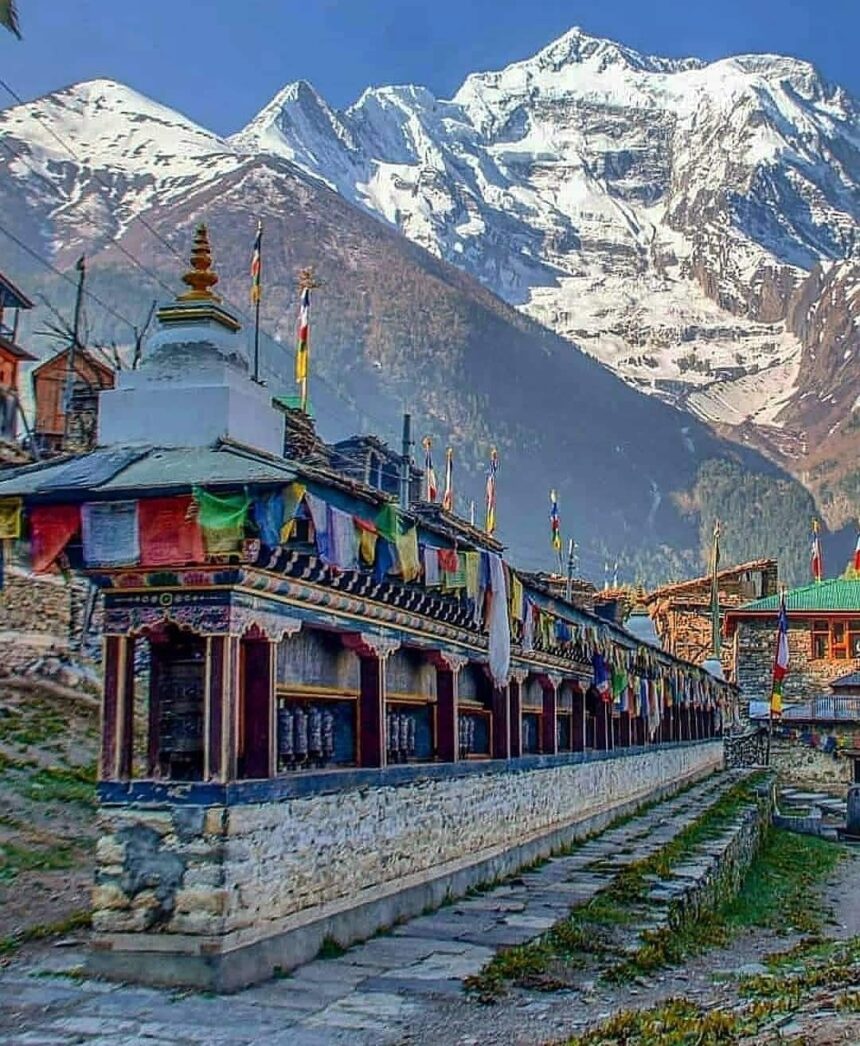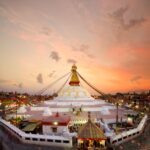Introduction
The Annapurna Circuit is one of the world’s most famous trekking routes, located in the heart of Nepal’s Himalayas. Known for its breathtaking landscapes, diverse cultures, and thrilling adventures, the circuit attracts trekkers, nature lovers, and spiritual seekers from across the globe.
- Introduction
- History of Annapurna Circuit
- Fascinating Facts About Annapurna Circuit
- Timeline of Annapurna Circuit
- Significance of Annapurna Circuit
- 1. Natural Significance
- 2. Cultural Importance
- 3. Adventure & Tourism
- 4. Economic Contribution
- 5. Spiritual & Educational Role
- 6. Eco-Tourism Awareness
- Observance & Cultural Activities
- Wishing on Annapurna Circuit
- Daily Life Impact
- FAQs About Annapurna Circuit
- Important Tips for Trekkers
- Importance in Society
- Conclusion
For travelers seeking cheap vacation ideas with adventure and cultural immersion, Annapurna Circuit offers an unforgettable experience. From lush subtropical forests to high-altitude deserts, and from traditional villages to panoramic Himalayan views, this trek combines nature, culture, and personal challenge in a unique way.
This guide covers history, fascinating facts, timeline, significance, observance, wishing, FAQs, daily life impact, and societal importance in a human-friendly, immersive style.
History of Annapurna Circuit
Early Trails: Originally, the Annapurna Circuit served as trade and pilgrimage routes for local communities and Tibetan traders.
Modern Trekking Era: Western explorers in the 1970s popularized the route, turning it into a globally recognized trekking destination.
Cultural Preservation: The route passes through Gurung, Thakali, and Tibetan-influenced villages, preserving centuries-old traditions and lifestyles.
Eco-Tourism Development: Over the past few decades, small lodges, tea houses, and guided trekking services have developed, supporting sustainable tourism.
Fun Fact: The Annapurna Circuit was once considered one of the longest trekking circuits in the world, covering over 160–230 km, depending on the route variations.
Fascinating Facts About Annapurna Circuit
Diverse Landscapes: Trek through lush forests, terraced fields, high-altitude deserts, and snowy Himalayan passes.
Thorong La Pass: The trek reaches the highest point at 5,416 meters, offering panoramic views of Annapurna and Dhaulagiri ranges.
Cultural Diversity: Pass through traditional villages, experiencing Gurung, Thakali, and Tibetan customs, festivals, and cuisine.
Flora and Fauna: Home to rhododendron forests, Himalayan wildlife, and diverse bird species.
Adventure Activities: Offers trekking, mountain photography, cultural tours, and river rafting nearby.
Economic Impact: Supports local communities through tea houses, guides, and handicrafts.
Spiritual Significance: Villages host temples, monasteries, and chortens, offering moments of reflection.
Eco-Friendly Trekking: Many initiatives encourage waste management, clean trekking, and responsible tourism.
Varied Difficulty Levels: Can be done by novice trekkers with guides or experienced mountaineers seeking a challenge.
Scenic Rewards: Every step rewards trekkers with mountain views, serene rivers, and cultural encounters.
Timeline of Annapurna Circuit
Pre-1970s: Used as trade and pilgrimage routes connecting remote villages.
1970s: Became famous internationally through trekking exploration.
1980s–1990s: Lodges and trekking infrastructure developed.
2000s: Eco-tourism and cultural preservation initiatives began.
2015: Route affected by earthquakes; restoration and safety improvements followed.
Present: One of the most popular trekking circuits globally, offering adventure, culture, and natural beauty.
Significance of Annapurna Circuit
1. Natural Significance
The trek showcases diverse ecosystems, from subtropical forests to high-altitude deserts, and majestic Himalayan peaks.
2. Cultural Importance
Villages along the circuit preserve traditional lifestyles, festivals, architecture, and cuisine, reflecting Nepal’s rich cultural diversity.
3. Adventure & Tourism
A global hotspot for trekking, photography, and adventure tourism, attracting thousands annually.
4. Economic Contribution
Tourism sustains tea houses, guides, porters, handicraft shops, and local markets, improving livelihoods.
5. Spiritual & Educational Role
Monasteries, temples, and cultural encounters provide learning experiences about Buddhism, Hinduism, and Himalayan traditions.
6. Eco-Tourism Awareness
The trek emphasizes responsible trekking, environmental conservation, and community-based tourism.
Observance & Cultural Activities
Festivals: Trekking during Tihar, Dashain, or local harvest festivals offers cultural immersion.
Religious Practices: Villages host Buddhist and Hindu rituals, prayer flags, and offerings at chortens and shrines.
Tea House Interaction: Visitors experience traditional meals, local stories, and cultural hospitality.
Guided Cultural Tours: Some trekking agencies offer educational tours about local history and customs.
Wishing on Annapurna Circuit
Trekkers and locals often make wishes during temple visits, at passes, and near scenic viewpoints:
🏔️ “May my journey be safe, adventurous, and transformative.”
🌸 “Wishing for respect and harmony between nature, communities, and travelers.”
🕉️ “May this trek inspire mindfulness, courage, and gratitude.”
These moments enrich the trekking experience, connecting adventurers to nature and local spirituality.
Daily Life Impact
The Annapurna Circuit significantly impacts locals and visitors:
For Trekkers: Offers physical challenge, cultural enrichment, spiritual reflection, and scenic beauty.
For Locals: Provides income, employment, and community development through tourism.
For Society: Promotes heritage preservation, environmental awareness, and cultural education.
Students and researchers gain knowledge in ecology, geography, sociology, and Himalayan cultures, fostering intellectual and personal growth.
FAQs About Annapurna Circuit
Q1: What is the best season to trek?
A: Spring (March–May) and Autumn (September–November) for clear skies and moderate temperatures.
Q2: How many days does the trek take?
A: Typically 14–21 days, depending on route, pace, and acclimatization stops.
Q3: Is the trek suitable for beginners?
A: With guides and preparation, beginners can complete it, though high-altitude sections require caution.
Q4: What are the main highlights?
A: Thorong La Pass, Annapurna Base Camp, Poon Hill, Muktinath, and Himalayan villages.
Q5: Are there accommodation options along the route?
A: Yes, tea houses, guesthouses, and lodges provide affordable stays with local food.
Important Tips for Trekkers
Acclimatize properly to avoid altitude sickness.
Carry layered clothing for varying climates.
Use local guides and porters for safety and support.
Bring water purification tablets, snacks, and first aid kit.
Respect local culture, religious practices, and natural environment.
Importance in Society
The Annapurna Circuit serves as a cultural, ecological, and economic lifeline:
Cultural Preservation: Maintains local traditions, rituals, and crafts.
Economic Role: Supports thousands of locals through tourism services.
Environmental Awareness: Encourages sustainable trekking and conservation.
Educational Opportunities: Teaches travelers about Himalayan ecology and culture.
Community Wellbeing: Strengthens local cohesion and cultural pride.
Conclusion
The Annapurna Circuit is more than just a trekking route; it is a life-changing journey that blends adventure, culture, and natural beauty. Affordable, challenging, and awe-inspiring, it offers trekkers a chance to connect with nature, local communities, and themselves.
🏔️ Wishing for You: May your Annapurna trek bring courage, insight, and unforgettable memories. Let each village, mountain view, and cultural encounter guide you toward personal growth, respect for nature, and appreciation of Nepalese heritage.









Hello! This is kind of off topic but I need some advice from an established blog. Is it very difficult to set up your own blog? I’m not very techincal but I can figure things out pretty quick. I’m thinking about setting up my own but I’m not sure where to begin. Do you have any tips or suggestions? Thanks